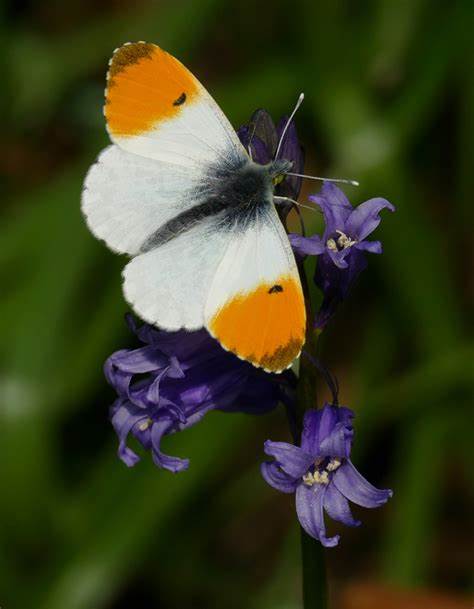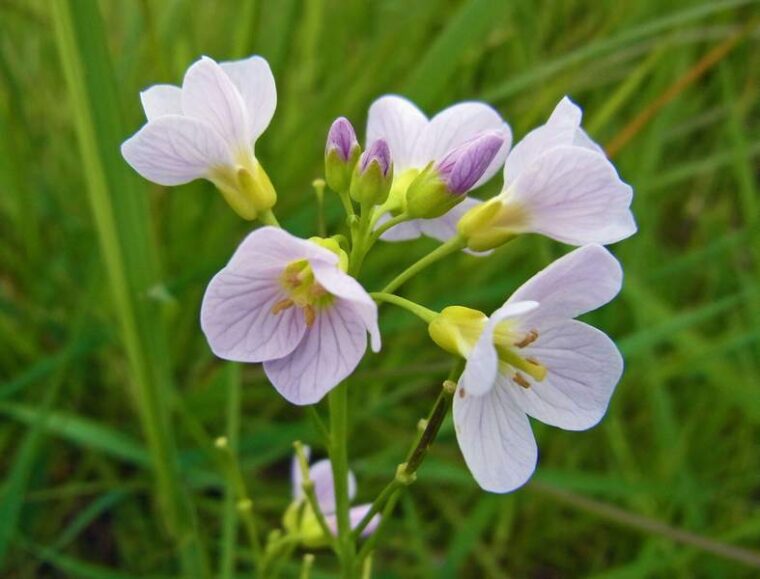
Paddy O’Byrne sent us this latest news:
As part of the Parish’s initial ecological action plan and in promotion of the message contained in the Holy Father’s encyclical “Laudato Si’” we have been looking for ways to encourage an increase in biodiversity in our Parish. To this end we identified two suitable areas within the grounds of Saint Cronan’s Church campus. We allowed two lawns to become long flowering wildflower meadows, in the hope of encouraging pollinators and other wildlife. Our efforts proved to be quite successful, and we were pleasantly surprised to discover that we had so many wildflower species already present in our lawns In one lawn/wildflower meadow area, we discovered a large patch of Cuckoo Flower/Lady’s Smock (photo below) which is a host plant for the caterpillars of the Green Veined White Butterfly and the Orange Tip Butterfly (photo above). We hope to facilitate an expansion in the area in which Cuckoo Flowers are present and to provide an attractive future habitat for these butterfly species. Unusually, the Cuckoo Flower can be propagated from leaf cuttings, and this should enable us to achieve a rapid increase in plant numbers over a relatively short time. See how to propagate Cuckoo Flower from leaf cuttings.

Fr. Richard our parish priest, allowed the front and back lawns of his presbytery to become short flowering ‘6-week meadows.’ Here too there were many wildflowers already present, with large areas of Self-Heal and Flatweed and smaller numbers of Oxeye Daisy. The various wildflower species attracted large numbers of bees. Bumble bees do not make honey and because of this they have no way of storing food. This means that they are always only a couple of days away from starvation, unless there is a nearby food source.
We plan to add selected native flowering & fruit bearing shrubs to our hedges as opportunities arise. These will provide food for bees, insects and birds as well as shelter for wildlife in general. Recently we had to remove six large Leylandii trees they had outgrown the available space. We intend to plant a biodiversity-friendly Blackthorn hedge later in the Autumn in place of the Leylandii.
